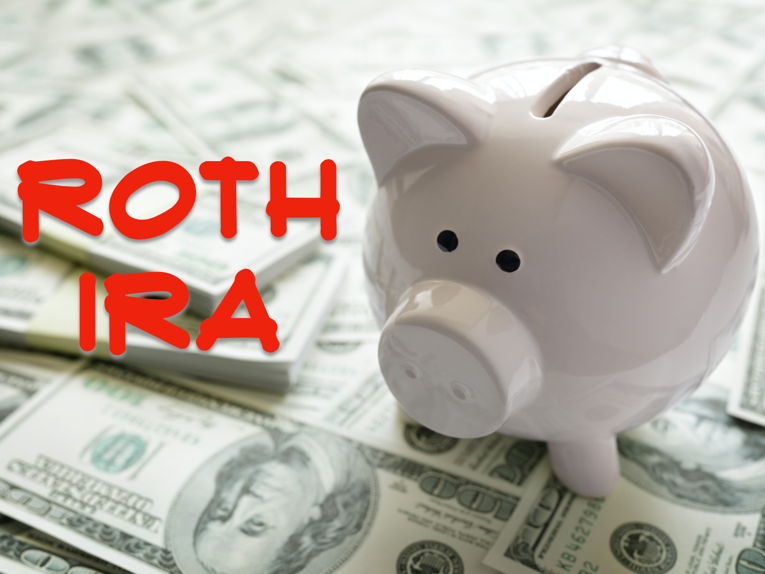The simple answer is yes, you can have more than one Roth IRA and you can open multiple Roth IRA accounts. If you are investing in a Roth IRA, you might know all the advantages it provides for retirement savings. But can you have multiple Roth IRAs? If yes, what are the pros and cons? Take a look at this article to get all your questions answered.
What is a Roth IRA?
A Roth IRA (Individual Retirement Account) is a type of retirement savings account that offers tax advantages to individuals in the United States. Unlike traditional IRAs, making contributions to a Roth IRA is possible with after-tax dollars. This implies that there isn’t an instant tax deduction granted for the contributions you make. However, the earnings in a Roth IRA grow tax-free, and qualified withdrawals in retirement are also tax-free.
Can You Have Multiple Roth IRAs?
Since there is no limit to the number of Roth IRA accounts you can have, you can open multiple Roth IRAs, sometimes even of the same type. This means you can have multiple Roth IRAs, other traditional IRAs, and SEP IRAs.
That said, expanding the number of your IRAs does not automatically increase the annual contribution limit. In 2024, the contribution limit for both Roth IRAs and traditional IRAs stands at $7,000 ($8,000 for individuals aged 50 or above).
You have the liberty to divide this sum between different types of IRAs in a particular year, should you choose to do so. (Contribution limits do not pertain to IRA rollovers, which involve transferring funds from a previous employer’s retirement plan, such as a 401(k), into an individual account.)
Pros of Having Multiple Roth IRAs
There is no limit to how many Roth IRAs you can have. And this comes with lots of advantages. Let’s explore them:
- Diversification of Investment: Owning multiple Roth IRAs enables diversification of investments by utilizing accounts from various financial institutions, each potentially presenting distinct investment opportunities.
- Diversification of Your Taxes: Various forms of Individual Retirement Accounts (IRAs) offer distinct tax advantages. In the case of a traditional IRA, you receive an immediate tax deduction, enabling you to defer your tax obligations to the IRS until you initiate withdrawals from the account during retirement. On the other hand, with a Roth IRA, there’s no initial tax benefit for contributions, yet withdrawals that meet certain criteria are entirely exempt from taxes.
- Tax Benefit on Inheritance: Inherited Roth IRAs do not incur any income taxes. This means that if you are a beneficiary to someone’s Roth IRA account, you are not taxed for it when you inherit the investments.
- Flexibility in Withdrawal: In contrast to a traditional IRA, a Roth IRA permits you to access your initial contribution after a five-year tenure. With Roths, there’s no mandatory withdrawal requirement based on age, thus providing your funds with an extended period to accumulate growth.
- Extra Insurance Coverage: In the unlikely event that your IRA custodian, whether a brokerage or bank, encounters financial distress, SIPC and FDIC insurance can provide protection for your investment and deposit accounts, potentially covering your losses. Typically, this coverage is restricted to $500,000 (SIPC) and $250,000 (FDIC) per account holder per institution, yet there are avenues to expand your coverage by maintaining multiple accounts.
Cons of Having Multiple Roth IRAs
While there are several advantages to having multiple Roth IRAs, it’s always better to know both sides of the coin. Here is a list of all the cons of having multiple Roth IRAs:
- Extra Paperwork: Having multiple ways to build your retirement funds definitely comes with the tiresome task of multiple paperwork, tax forms, privacy policies, service change notices, and other updates and paperwork.
- Complicated Retirement Planning: Strategically distributing assets across various accounts, known as asset allocation, plays a pivotal role in retirement planning by striking the optimal equilibrium between risk and reward. When assets are diversified, managing performance and readjusting the overall portfolio composition to uphold a cohesive investment strategy becomes a more intricate task.
- More Investment and Account Fees: Giving priority to accounts with higher balances is common, often overlooking smaller ones. However, neglecting any retirement savings account’s maintenance and management can result in underwhelming investment returns, particularly due to fees like brokerage fees and mutual fund sales loads, which gradually diminish your earning potential.
When to Have Multiple Roth IRAs?
Opening multiple Roth IRAs is more of a personal choice, depending on your investment capabilities, goals, income, and age. However, opening multiple Roth IRAs makes the most sense when you want to diversify your investments if the account provider offers limited benefits for one investment account.
Can You Consolidate Multiple Roth IRAs?
Yes, combining accounts can simplify account management, record maintenance, and tax reporting. Moreover, merging accounts can help avoid unnecessary charges. Importantly, merging balances does not impact your yearly contribution thresholds.
Seeking guidance from a financial advisor may help you comprehend your IRA holdings and align them with your objectives and risk appetite.
Seek Professional Guidance
While having multiple Roth IRAs is entirely a personal choice, it’s always best to take professional advice from experienced individuals.
At SD Retirement Plans, we help individuals like you make great retirement plans based on your goals and needs. Contact us to learn more.
Need Help with Multiple Roth IRAs?

My goal is to assist clients/investors in their quest for financial freedom and creating generational wealth through one on one consultation and an abundance of online tools to educate. For the past 5 years I have been a private pension plan consultant with Self Directed Retirement Plans working directly with my partner Rick Pendykoski (owner) or you can .




